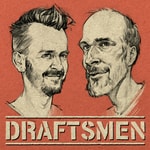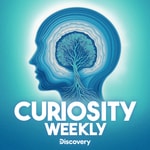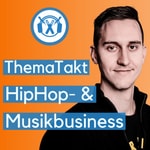The New Quantum Era - innovation in quantum computing, science and technology – Détails, épisodes et analyse
Détails du podcast
Informations techniques et générales issues du flux RSS du podcast.
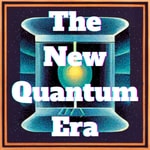
The New Quantum Era - innovation in quantum computing, science and technology
Sebastian Hassinger
Fréquence : 1 épisode/19j. Total Éps: 57
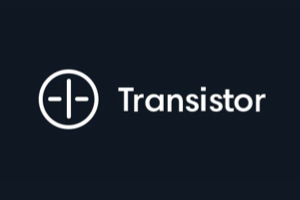
Classements récents
Dernières positions dans les classements Apple Podcasts et Spotify.
Apple Podcasts
🇨🇦 Canada - physics
01/08/2025#9🇬🇧 Grande Bretagne - physics
01/08/2025#16🇩🇪 Allemagne - physics
01/08/2025#11🇺🇸 États-Unis - physics
01/08/2025#7🇫🇷 France - physics
01/08/2025#24🇨🇦 Canada - physics
31/07/2025#6🇬🇧 Grande Bretagne - physics
31/07/2025#15🇩🇪 Allemagne - physics
31/07/2025#9🇺🇸 États-Unis - physics
31/07/2025#6🇫🇷 France - physics
31/07/2025#19
Spotify
Aucun classement récent disponible
Liens partagés entre épisodes et podcasts
Liens présents dans les descriptions d'épisodes et autres podcasts les utilisant également.
See all- https://www.darpa.mil/
22 partages
- https://www.quantum-machines.co/
13 partages
Qualité et score du flux RSS
Évaluation technique de la qualité et de la structure du flux RSS.
See allScore global : 63%
Historique des publications
Répartition mensuelle des publications d'épisodes au fil des années.
Quantum Machine Learning with Jessica Pointing
Épisode 38
lundi 26 août 2024 • Durée 43:36
In this episode of The New Quantum Era podcast, hosts Sebastian Hassinger and Kevin Roney interview Jessica Pointing, a PhD student at Oxford studying quantum machine learning.
Classical Machine Learning Context
- Deep learning has made significant progress, as evidenced by the rapid adoption of ChatGPT
- Neural networks have a bias towards simple functions, which enables them to generalize well on unseen data despite being highly expressive
- This “simplicity bias” may explain the success of deep learning, defying the traditional bias-variance tradeoff
Quantum Neural Networks (QNNs)
- QNNs are inspired by classical neural networks but have some key differences
- The encoding method used to input classical data into a QNN significantly impacts its inductive bias
- Basic encoding methods like basis encoding result in a QNN with no useful bias, essentially making it a random learner
- Amplitude encoding can introduce a simplicity bias in QNNs, but at the cost of reduced expressivity
- Amplitude encoding cannot express certain basic functions like XOR/parity
- There appears to be a tradeoff between having a good inductive bias and having high expressivity in current QNN frameworks
Implications and Future Directions
- Current QNN frameworks are unlikely to serve as general purpose learning algorithms that outperform classical neural networks
- Future research could explore:
- Discovering new encoding methods that achieve both good inductive bias and high expressivity
- Identifying specific high-value use cases and tailoring QNNs to those problems
- Developing entirely new QNN architectures and strategies
- Evaluating quantum advantage claims requires scrutiny, as current empirical results often rely on comparisons to weak classical baselines or very small-scale experiments
In summary, this insightful interview with Jessica Pointing highlights the current challenges and open questions in quantum machine learning, providing a framework for critically evaluating progress in the field. While the path to quantum advantage in machine learning remains uncertain, ongoing research continues to expand our understanding of the possibilities and limitations of QNNs.
Paper cited in the episode:
Do Quantum Neural Networks have Simplicity Bias?
Quantum reservoir computing with Susanne Yelin
Épisode 37
jeudi 15 août 2024 • Durée 25:55
Sebastian is joined by Susanne Yelin, Professor of Physics in Residence at Harvard University and the University of Connecticut.
Susanne's Background:
- Fellow at the American Physical Society and Optica (formerly the American Optics Society)
- Background in theoretical AMO (Atomic, Molecular, and Optical) physics and quantum optics
- Transition to quantum machine learning and quantum computing applications
Quantum Machine Learning Challenges
- Limited to simulating small systems (6-10 qubits) due to lack of working quantum computers
- Barren plateau problem: the more quantum and entangled the system, the worse the problem
- Moved towards analog systems and away from universal quantum computers
Quantum Reservoir Computing
- Subclass of recurrent neural networks where connections between nodes are fixed
- Learning occurs through a filter function on the outputs
- Suitable for analog quantum systems like ensembles of atoms with interactions
- Advantages: redundancy in learning, quantum effects (interference, non-commuting bases, true randomness)
- Potential for fault tolerance and automatic error correction
Quantum Chemistry Application
- Goal: leverage classical chemistry knowledge and identify problems hard for classical computers
- Collaboration with quantum chemists Anna Krylov (USC) and Martin Head-Gordon (UC Berkeley)
- Focused on effective input-output between classical and quantum computers
- Simulating a biochemical catalyst molecule with high spin correlation using a combination of analog time evolution and logical gates
- Demonstrating higher fidelity simulation at low energy scales compared to classical methods
Future Directions
- Exploring fault-tolerant and robust approaches as an alternative to full error correction
- Optimizing pulses tailored for specific quantum chemistry calculations
- Investigating dynamics of chemical reactions
- Calculating potential energy surfaces for molecules
- Implementing multi-qubit analog ideas on the Rydberg atom array machine at Harvard
- Dr. Yelin's work combines the strengths of analog quantum systems and avoids some limitations of purely digital approaches, aiming to advance quantum chemistry simulations beyond current classical capabilities.
LIVE! On campus quantum computing with Rensselaer Polytechnic Institute
Épisode 28
mercredi 17 avril 2024 • Durée 57:49
For this episode, Sebastian is on his own, as Kevin is taking a break. Sebastian accepted a gracious invite to the ribbon cutting event at Rensselaer Polytechnic Institute in Troy, NY, where the university was launching their on-campus IBM System One -- the first commercial quantum computer on a university campus!
This week, the episode is a recording a live event hosted by Sebastian. The panel of RPI faculty and staff talk about their decision to deploy a quantum computer in their own computing center -- a former chapel from the 1930s! - what they hope the RPI community will do with the device, and the role of academic partnership with private industry at this stage of the development of the technology.
Joining Sebastian on the panel were:
- James Hendler, Professor and Director of Future of Computing Institute
- Jackie Stampalia, Director, Client Information Services, DotCIO
- Osama Raisuddin, Research Scientist, RPI
- Lucy Zhang, Professor, Mechanical, Aerospace, and Nuclear Engineering
Quantum computing for high energy physics simulations with Martin Savage
Épisode 27
lundi 8 avril 2024 • Durée 36:22
- Dr. Martin Savage is a professor of nuclear theory and quantum informatics at the University of Washington. His research explores using quantum computing to investigate high energy physics and quantum chromodynamics.
- Dr. Savage transitioned from experimental nuclear physics to theoretical particle physics in his early career. Around 2017-2018, limitations in classical computing for certain nuclear physics problems led him to explore quantum computing.
- In December 2022, Dr. Savage's team used 112 qubits on IBM's Heron quantum processor to simulate hadron dynamics in the Schwinger Model. This groundbreaking calculation required 14,000 CNOT gates at a depth of 370.
- Error mitigation techniques, translational invariance in the system, and running the simulation over the December holidays when the quantum hardware was available enabled this large-scale calculation.
- While replacing particle accelerator experiments is not the goal, quantum computers could eventually complement experiments by simulating environments not possible in a lab, like the interior of a neutron star.
- Quantum information science is increasingly important in the pedagogy of particle physics. Advances in quantum computing hardware and error mitigation are steadily enabling more complex simulations.
- The incubator for quantum simulation at University of Washington brings together researchers across disciplines to collaborate on using quantum computers to advance nuclear and particle physics.
Links:
Dr. Savage's home page
The InQubator for Quantum Simulation
Quantum Simulations of Hadron Dynamics in the Schwinger Model using 112 Qubits
IBM's blog post which contains some details regarding the Heron process and the 100x100 challenge.
Modular Quantum System Architectures with Yufei Ding
Épisode 26
mardi 26 mars 2024 • Durée 36:06
In this episode, Sebastian and Kevin interview Professor Yufei Ding, an associate professor at UC San Diego, who specializes in the intersection of theoretical physics and computer science. They discuss Dr. Ding's research on system architecture in quantum computing and the potential impact of AI on the field. Dr. Ding's work aims to replicate the critical stages of classical computing development in the context of quantum computing. The conversation explores the challenges and opportunities in combining computer science, theoretical and experimental quantum computing, and the potential applications of quantum computing in machine learning.
Takeaways
- Yufei Ding's research focuses on system architecture in quantum computing, aiming to replicate the critical stages of classical computing development in the context of quantum computing.
- The combination of computer science, theoretical and experimental quantum computing is a unique approach that offers new insights and possibilities.
- AI and machine learning have the potential to greatly impact quantum computing, and finding a generically applicable quantum advantage in machine learning could have a transformative effect.
- The development of a simulation framework for exploring different system architectures in quantum computing is crucial for advancing the field and identifying viable outcomes.
Chapters
00:00 Introduction and Background
02:12 Yufei Ding's System Architecture
03:08 AI and Quantum Computing
04:19 Conclusion
Material Science with Houlong Zhuang at Q2B Paris
Épisode 25
mardi 12 mars 2024 • Durée 33:38
In this special solo episode recorded at Q2B Paris 2024, Sebastian talks with Houlong Zhuang, assistant professor at Arizona State University, about his work in material science.
- Dr. Zhuang discusses his research on using quantum computing and machine learning to simulate high entropy alloy materials. The goal is to efficiently predict material properties and discover new material compositions.
- Density functional theory (DFT) is a commonly used classical computational method for materials simulations. However, it struggles with strongly correlated electronic states. Quantum computers have the potential to efficiently simulate these challenging quantum interactions.
- The research uses classical machine learning models trained on experimental data to narrow down the vast combinatorial space of possible high entropy alloy compositions to a smaller set of promising candidates. This is an important screening step.
- Quantum machine learning and quantum simulation are then proposed to further refine the predictions and simulate the quantum interactions in the materials more accurately than classical DFT. This may enable prediction of properties like stability and elastic constants.
- Key challenges include the high dimensionality of the material composition space and the noise/errors in current quantum hardware. Hybrid quantum-classical algorithms leveraging the strengths of both are a promising near-term approach.
- Ultimately, the vision is to enable inverse design - using the models to discover tailored material compositions with desired properties, potentially reducing experimental trial-and-error. This requires highly accurate, explainable models.
- In the near-term, quantum advantage may be realized for specific local properties or excited states leveraging locality of interactions. Fully fault-tolerant quantum computers are likely needed for complete replacement of classical DFT.
- Continued development of techniques like compact mappings, efficient quantum circuit compilations, active learning, and quantum embeddings of local strongly correlated regions will be key to advancing practical quantum simulation of realistic materials.
In summary, strategically combining machine learning, quantum computing, and domain knowledge of materials is a promising path to accelerating materials discovery, but significant research challenges remain to be overcome through improved algorithms and hardware. A hybrid paradigm will likely be optimal in the coming years.
Some of Dr. Zhuang's papers include:
Quantum machine-learning phase prediction of high-entropy alloys
Sudoku-inspired high-Shannon-entropy alloys
Machine-learning phase prediction of high-entropy alloys
A look back at quantum computing in 2023 with Kevin and Sebastian
Épisode 24
lundi 26 février 2024 • Durée 35:01
No guest this episode! Instead, Kevin and Sebastian have a conversation looking back on the events of 2023 in quantum computing, wiht a particular focus on three trends: some waning of enthusiasm in the private sector, a surge of investments from the public sector as national and regional governments invest in the quantum computing value chain and the shift from a focus on NISQ to logical qubits.
Qureca's overview of public sector quantum initiatives in 2023
Preskill's NISQ paper from 2018 (yes, I was off by a few years!)
The paper that introduced the idea of VQE: A variational eigenvalue solver on a quantum processor by Peruzzo et al
A variation on VQE that still has some promise An adaptive variational algorithm for exact molecular simulations on a quantum computer by Grimsley et al
Mitiq, a quantum error mitigation framework from Unitary Fund
Peter Shor's first of its kind quantum error correction in the paper Scheme for reducing decoherence in quantum computer memory
Quantinuum demonstrates color codes to implement a logical qubit on their ion trap machine, H-1
Toric codes introduced in Fault-tolerant quantum computation by anyons by Alexei Kitaev
Surface codes and topological qubits introduced in Topological quantum memory by Eric Dennis, Alexei Kitaev, Andrew Landahl, and John Preskill
The threshold theorem is laid out in Fault-Tolerant Quantum Computation With Constant Error Rate by Dorit Aharonov and Michael Ben-Or
The GKP variation on the surface code appears in Encoding a qubit in an oscillator by Daniel Gottesman, Alexei Kitaev, John Preskill
A new LDPC based chip architecture is described in High-threshold and low-overhead fault-tolerant quantum memory by Sergey Bravyi, Andrew W. Cross, Jay M. Gambetta, Dmitri Maslov, Patrick Rall, Theodore J. Yoder
Neutral atoms are used to create 48 logical qubits in Logical quantum processor based on reconfigurable atom arrays by Vuletic's and Lukin's groups at MIT and Harvard respectively
If you have an idea for a guest or topic, please email us.
Also, John Preskill has agreed to return to answer questions from our audience so please send any question you'd like Professor Preskill to answer our way at info@the-new-quantum-era.com
Dawning of the Era of Logical Qubits with Dr Vladan Vuletic
Épisode 23
lundi 12 février 2024 • Durée 44:27
Kevin and Sebastian are joined by Dr. Vladan Vuletic, the Lester Wolfe Professor of Physics at the Center for Ultracold Atoms and Research in the Department of Physics at the Massachusetts Institute of Technology
At the end of 2023, the quantum computing community was startled and amazed by the results from a bombshell paper published in Nature on December 6th, titled Logical quantum processor based on reconfigurable atom arrays in which Dr. Vuletic's group collaborated with Dr Mikhail Lukin's group at Harvard to create 48 logical qubits from an array of 280 atoms. Scott Aaronson does a good job of breaking down the results on his blog, but the upshot is that this is the largest number of logical qubits created, and a very large leap ahead for the field.
00:00 Introduction and Background
01:07 Path to Quantum Computing
03:30 Rydberg Atoms and Quantum Gates
08:56 Transversal Gates and Logical Qubits
15:12 Implementation and Commercial Potential
23:59 Future Outlook and Quantum Simulations
30:51 Scaling and Applications
32:22 Improving Quantum Gate Fidelity
33:19 Advancing Field of View Systems
33:48 Closing the Feedback Loop on Error Correction
35:29 Quantum Error Correction as a Remarkable Breakthrough
36:13 Cross-Fertilization of Quantum Error Correction Ideas
Trapped Ions and Quantum VCs with Chiara Decaroli
Épisode 22
vendredi 15 décembre 2023 • Durée 54:02
Summary
In this episode, Sebastian and Kevin are joined by Chiara Decaroli, a quantum physicist and venture capitalist. Chiara shares her unique journey into the field of quantum, starting from a small village in Italy to earning her PhD in quantum physics. She explains the history of ion trapping and how it led to the development of quantum computing. Chiara also discusses the strengths and weaknesses of trapped ion systems and the challenges of investing in early-stage quantum startups. In this conversation, Chiara Decaroli discusses the challenges of assessing quantum technologies and the deep expertise required in the field. She also shares her experience in gaining familiarity with different quantum modalities and the importance of multidisciplinarity in the quantum field. Chiara highlights the skills needed in the quantum industry, emphasizing the need for deep knowledge in physics and specialized segments. She also discusses the importance of cross-disciplinary education and the potential impact of quantum technologies.
Takeaways
Chiara's path to quantum started from a small village in Italy and led her to earn a PhD in quantum physics at ETH Zurich.
Ion trapping is a key technology in quantum computing, and it has a rich history dating back to the 1930s.
Trapped ions can be manipulated using laser beams to perform single and two-qubit gates.
Trapped ion systems have the advantage of perfect qubits but face challenges in scalability and speed of operations.
Investing in quantum startups requires a deep understanding of the field and the ability to navigate the early-stage landscape. Assessing quantum technologies requires deep expertise and a scientific background.
Gaining familiarity with different quantum modalities requires extensive reading and talking to experts in the field.
The quantum field is highly multidisciplinary, requiring expertise in physics, engineering, software development, and specialized domains.
Cross-disciplinary education is important in the quantum field to foster innovation and solve complex problems.
The potential impact of quantum technologies is immense, but it is challenging to predict the exact applications and advancements.
Chapters
00:00 Introduction and Background
01:01 Chiara's Path to Quantum
08:13 History of Ion Trapping
19:47 Implementing Gates with Trapped Ions
27:24 Strengths and Weaknesses of Trapped Ion Systems
35:49 Venture Capital in Quantum
37:55 The Challenges of Assessing Quantum Technologies
39:12 Gaining Familiarity with Different Quantum Modalities
40:27 The Multidisciplinary Nature of Quantum Technologies
41:22 Skills Needed in the Quantum Field
42:58 The Importance of Cross-Disciplinary Education
44:27 The Potential Impact of Quantum Technologies
Adiabatic and Counterdiabatic Quantum Computing with Dr. Ieva Čepaitė
Épisode 21
lundi 20 novembre 2023 • Durée 41:04
In this episode of The New Quantum Era, Kevin Rowney and Sebastian Hassinger are joined by Dr. Ieva Čepaitė to delve into the nuanced world of quantum physics and computation. Dr. Čepaitė discusses her journey into quantum computing and her work on counterdiabatic methods used to optimize the control of many body quantum states. She provides an overview of the landscape of new algorithms available within the field. She points out the importance of understanding the hardware to implement a quantum algorithm effectively. The focus then shifts to a discussion on adiabatic and counterdiabatic systems, providing a detailed understanding of both methods. The conversation concludes with a speculative take on future breakthroughs that could emerge with respect to quantum algorithms.
00:31 Introduction and Overview of the Interview
02:43 Dr. Čepaitė's Journey into Quantum Computing
05:23 Dr. Čepaitė's Diverse Experience in Quantum Computing
09:37 The Challenges and Opportunities in Quantum Computing
11:50 Understanding Adiabatic and Counterdiabatic Systems
15:15 The Potential of Counterdiabatic Techniques in Quantum Computing
25:49 The Future of Quantum Algorithms
32:55 The Role of Quantum Machine Learning
35:48 Closing Remarks and Reflections

